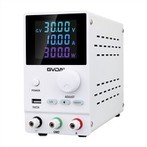Study on Subharmonic Oscillation in Peak Current Mode Switching Power Supplies
DC-DC switching power supplies have been widely used in the fields of electronics, electrical equipment, and home appliances due to their advantages of small size, light weight, high efficiency, and stable performance, and have entered a period of rapid development. DC-DC switching power supplies use power semiconductors as switches to adjust the output voltage by controlling the duty cycle of the switches. Its control circuit topology is divided into current mode and voltage mode. Current mode control is widely used due to its advantages such as fast dynamic response, simplified compensation circuit, large gain bandwidth, small output inductance, and easy current sharing. Current mode control is divided into peak current control and average current control. The advantages of peak current are: 1) fast transient closed-loop response, and fast transient response to changes in input voltage and output load; 2) The control loop is easy to design; 3) Has a simple automatic magnetic balance function; 4) Has instantaneous peak current limiting function, etc. However, peak inductor current may cause subharmonic oscillations in the system. Although many literature have introduced this to some extent, they have not systematically studied subharmonic oscillations, especially their causes and specific circuit implementations. This article will conduct a systematic study on subharmonic oscillations.
Cause of 1st harmonic oscillation
Taking the PWM modulation peak current mode switching power supply as an example (as shown in Figure 1, and the down slope compensation structure is provided), the causes of subharmonic oscillation are analyzed in detail from different perspectives.
For the current inner loop control mode, Figure 2 shows the variation of inductor current when the system duty cycle is greater than 50% and the inductor current undergoes a small step △ 厶. The solid line represents the inductor current waveform during normal system operation, and the dashed line represents the actual working waveform of the inductor current. It can be seen that: 1) the inductance current error in the next clock cycle is larger than that in the previous cycle, indicating that the inductance current error signal oscillates and diverges, and the system is unstable; 2) The oscillation period is twice the switching period, which means the oscillation frequency is half of the switching frequency. This is the origin of the name subharmonic oscillation. Figure 3 shows the variation of inductor current when the system duty cycle is greater than 50% and there is a small step AD in the duty cycle. It can be seen that the system also exhibits subharmonic oscillation. When the system duty cycle is less than 50%, although disturbances in the inductor current or duty cycle can also cause oscillations in the inductor current error signal, this oscillation belongs to decay oscillation. The system is stable.






